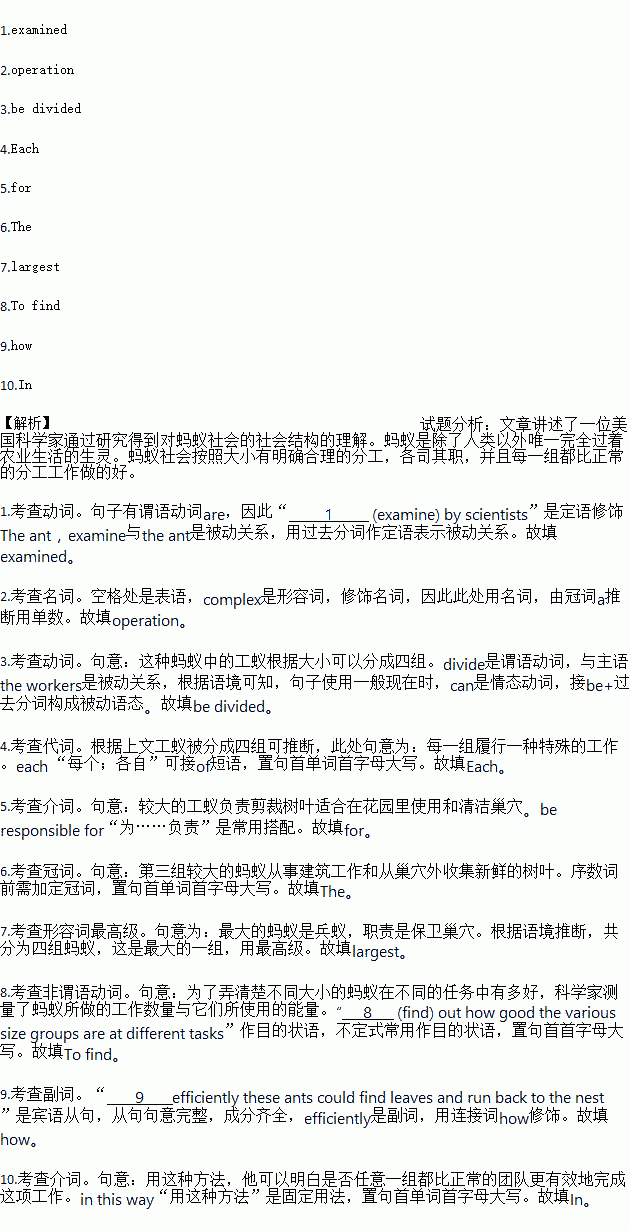题目内容
Through a series of experiments, an American scientist has gained an understanding of the social structure of ant societies. The ants 1. (examine) by scientists are the only creatures other than man to have given up hunting and collecting for a completely agricultural way of life. In their underground nests they plant gardens on soils made from finely cut leaves. This is a complex 2. (operate) requiring considerable division of labor. The workers of this type of ant can 3. (divide) into four groups according to size. 4. of the groups performs a particular set of jobs.
The making and care of the garden and the nursing of the young ants are done by the smallest workers. Slightly larger workers are responsible 5.cutting leaves to make them suitable for use in the gardens and for cleaning the nest. 6. third group of still larger ants do the construction work and collect fresh leaves from outside the nest. The 7. (large) are the soldier ants, whose duty is to defend the nest.
8. (find) out how good the various size groups are at different tasks, the scientist measured the amount of work done by the ants against the amount of energy they used. He examined first the gathering and carrying of leaves. He selected one of the size groups and then measured 9.efficiently these ants could find leaves and run back to the nest. Then he repeated the experiment for each of the other size groups. 10.this way he could see whether any group could do the job more efficiently than the group normally undertaking it.


 e. However,some of the more specific results are strange enough. For example,“practical and functional”shoes were generally worn by more“pleasant”people,while ankle boots were more linked with“aggressive”personalities. The strangest of all may be that those who wore“uncomfortable looking” shoes tend to have “calm” personalities. And if you have several pairs of new shoes or take extreme care of them,you may suffer from“attachment anxiety”,spending lots of time worrying about what other people think of your appearance. There was even a political calculation in the mix with more liberal(主张变革的)types wearing“shabbier and less expensive” shoes.
e. However,some of the more specific results are strange enough. For example,“practical and functional”shoes were generally worn by more“pleasant”people,while ankle boots were more linked with“aggressive”personalities. The strangest of all may be that those who wore“uncomfortable looking” shoes tend to have “calm” personalities. And if you have several pairs of new shoes or take extreme care of them,you may suffer from“attachment anxiety”,spending lots of time worrying about what other people think of your appearance. There was even a political calculation in the mix with more liberal(主张变革的)types wearing“shabbier and less expensive” shoes.